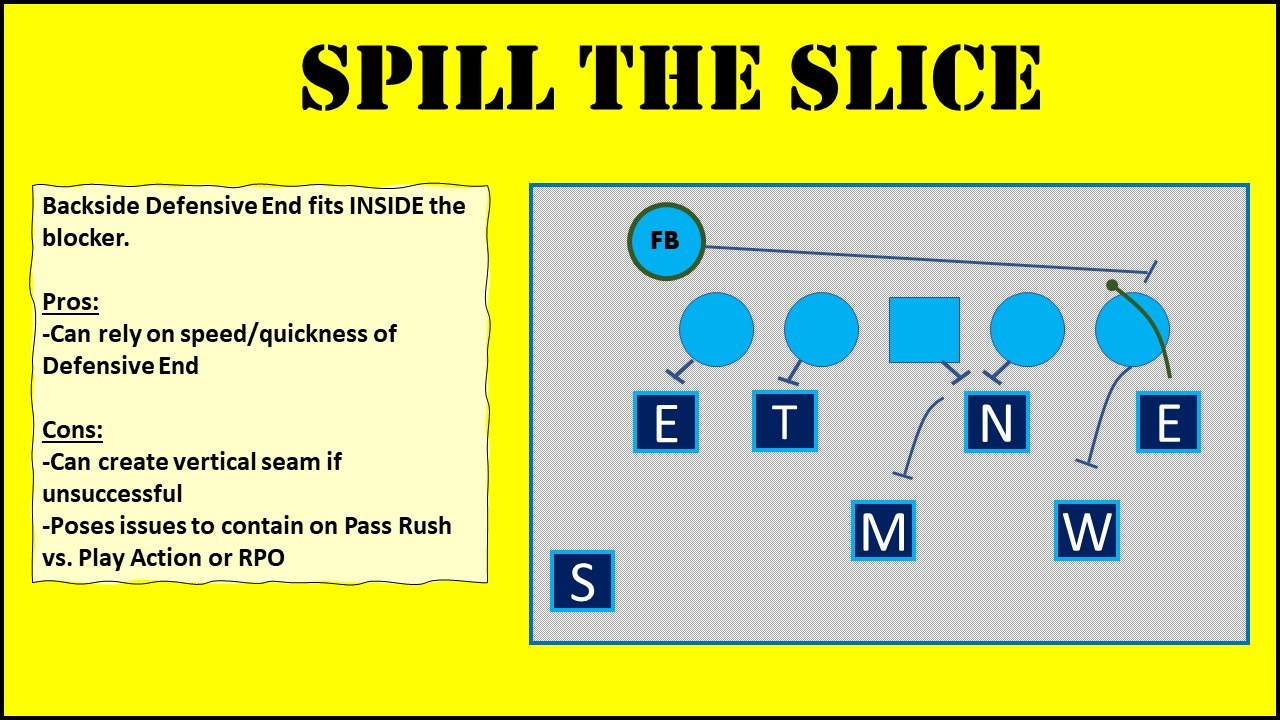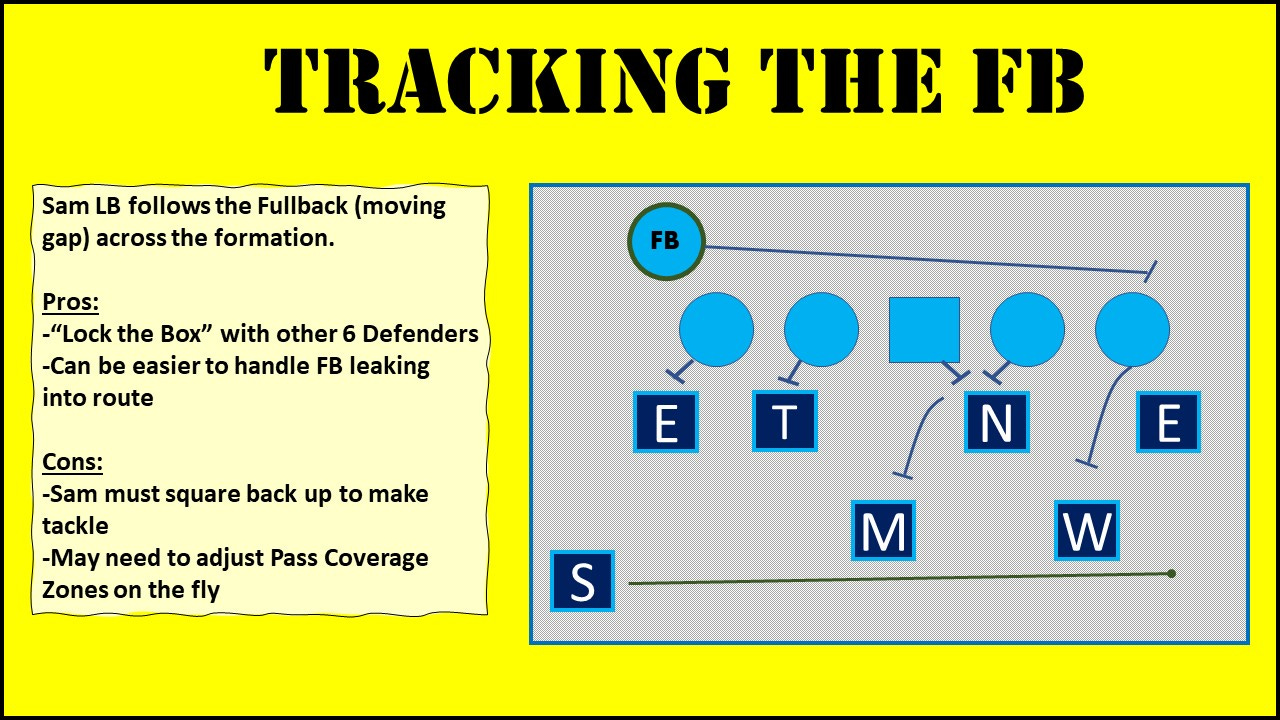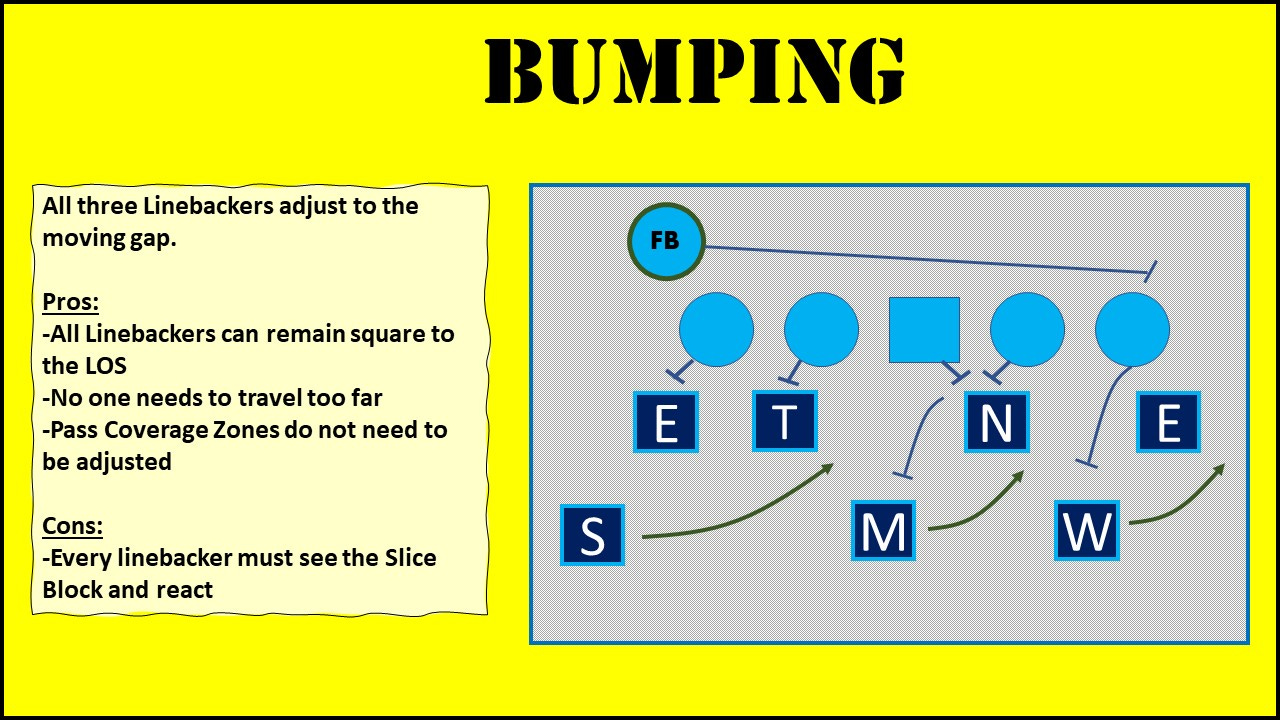Defending Split Zone
Here are a few brief starting points when it comes to defending this popular Canadian football run play.
What is the “Split Zone”?
The Split Zone (or Zone Slice) is essentially an Inside Zone run play with an additional blocker coming across the formation to block the backside end. The challenge then for the Defence is deciding how we will account for that additional run gap. We must also remember that the moving blocker is an eligible receiver.
Variations
Modern Offences are not only running this play with a true fullback coming across the formation, but also with slots and wideouts and anyone else they can convince to come across the formation and block the backside end. For the purpose of this newsletter, we will discuss the play being run with a true fullback or wing, but these added variables are something to consider when putting together your entire defensive package.
Question #1: How will your backside defensive end react to the Slice Block?
While there are a few options here, the two main answers are often Spill or Box.
Spill
To “Spill” the block means to fight INSIDE the blocker by using a Wrong Arm Technique. Now the defensive end is responsible for the “C Gap”, while an additional defender will be needed to cover the outside “D Gap”.
As a coach you might choose the Spill option because your team is built on speed rather than size.
Wrong Arm Tip: After executing the initial technique the defender will need to “PRY” his shoulders square and fight pressure to not get washed inside.
Box
When you are a “Box” team that means your defensive end will fight hard to stonewall the Slice Block and set the edge. This can create a big collision and is a very physical technique. The defensive end should use their shoulder or hands to stop the blocker in their tracks. The defender should then try to create some separation from the blocker while keeping their “outside arm free”. The defender must use a good low pad level to execute this technique.
Note: Offences will often use a Cut Block in this situation, so defenders must be trained on how to protect themselves from injury when Cut on a Slice.
Question #2: How will the Run Fit be adjusted to account for the moving gap?
Again a few creative options are available here, but the two main answers are often to either Track or Bump.
Track
To “Track” means that one defender will follow the moving blocker and account for the new gap. The advantage here is that the rest of the defenders do not need to adjust at all and can simply control their original gaps. The tracking defender must have great eye discipline and use good “Back Hip” leverage when tracking.
If the blocker makes contact with the backside defensive end, the tracking defender must control the new gap base on the Spill or Box fit. If the blocker avoids the end and runs a route, the tracking defender must react accordingly based on the coverage.
Bump
This means that all three linebackers will work together to adjust to the new gap. This takes an incredible amount of practice and communication to execute properly. If one of the three linebackers misses their fit, a run seam could open. The advantage here is that all three linebackers can keep their shoulders square to the line of scrimmage, and no one needs to travel too far.
Summary
These are just a few brief starting points when it comes to structuring the Run Fits within your defence. Obviously, an incredible amount of work will go into expanding these ideas to cover all of the variations you will see within the run game, as well as all of the specific techniques your players will need in order to execute these schemes. This is the joy of coaching. Enjoy!!





